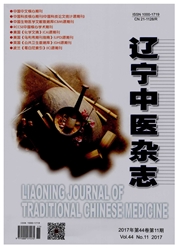

 中文摘要:
中文摘要:
目的:探讨冠心病不同亚型、合并不同疾病及介入治疗前后的中医证候特点,为其临床中医辨治提供参考。方法:对502例冠心病患者进行横断面调查,运用统计学方法分析不同亚型、合并不同疾病及介入治疗前后的证候类型及证候要素分布特征。结果:冠心病主要证候为气虚血瘀,心绞痛多实证,心肌梗死多虚证;合并高血压气阴两虚证增多,合并脑卒中气滞血瘀证较明显;介入术后较介入前证候有由实转虚趋势。结论:冠心病不同类型及阶段有不同中医证候特点,临床诊治应病证结合。
 英文摘要:
英文摘要:
Objective: To analyze the TCM syndrome distribution features of coronary heart disease( CHD) patients with different subsets and in different stages to provide references for syndrome differentiation and treatment of CHD patients. Methods: In terms of cross- sectional survey in 502 patients,we used statistics methods to get syndrome types and syndrome factor distribution of CHD patients and patients with different subsets or combined with different diseases,analyzing syndrome development of patients with CHD before and after percutaneous coronary intervention( PCI). Results: The main syndrome type of CHD is qi deficiency and blood stasis syndrome and angina pectoris patients have more excess syndrome and myocardial infarction patients have more deficiency syndrome. There is significantly more qi and yin deficiency syndrome for patients combined with hypertension and proportion of qi stagnation and blood stasis is comparatively higher for patients combined with stroke. There is a trend from excess toward deficiency for patients with CHD before and after PCI. Conclusion: CHD patients with different subsets and in different stages have different TCM syndrome distribution features and we should make use of them in clinic.
 同期刊论文项目
同期刊论文项目
 同项目期刊论文
同项目期刊论文
 期刊信息
期刊信息
